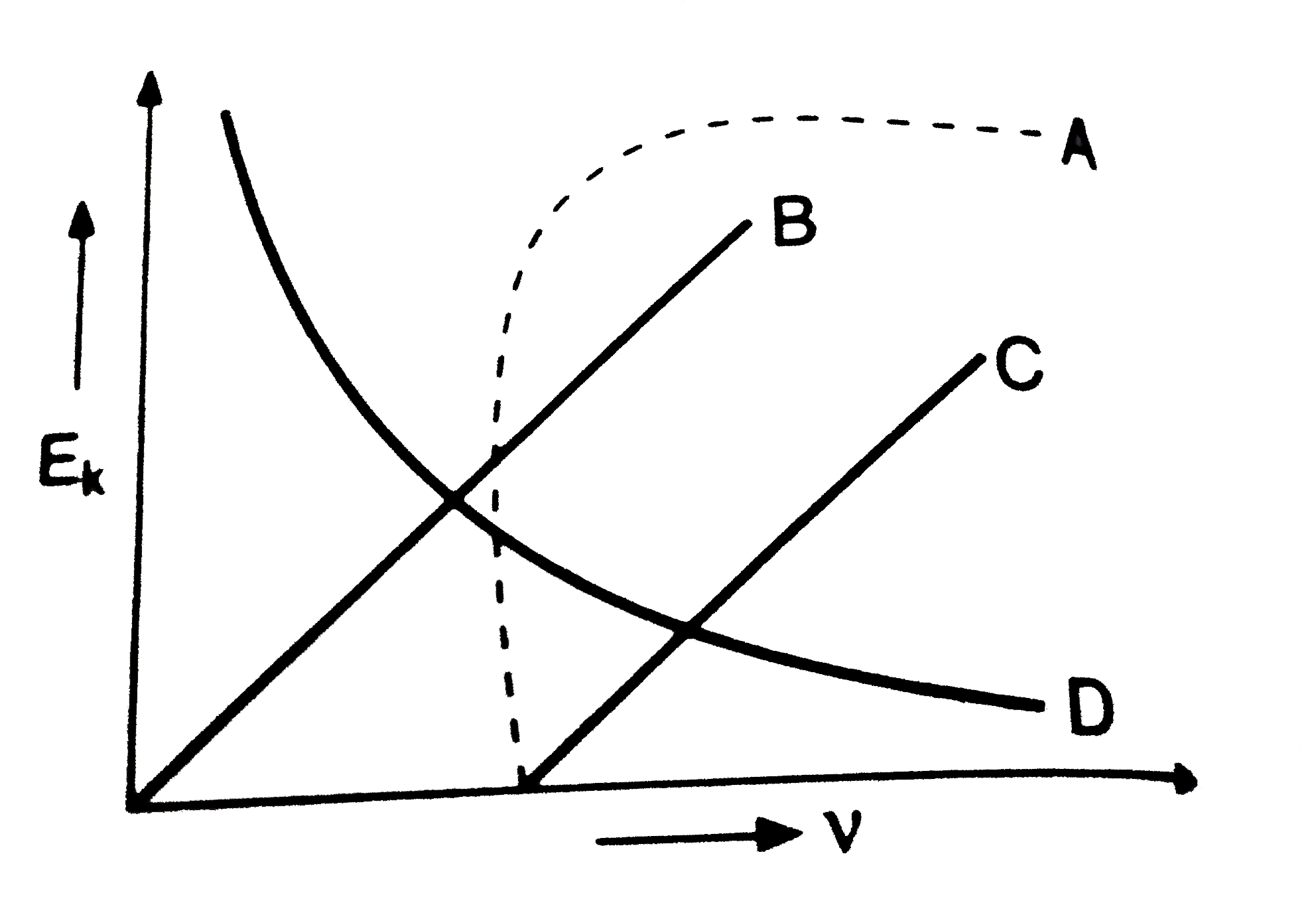When ultraviolet light is incident on a photocell, its stopping potential is V0 and the maximum kinetic energy of the photoelectrons is Kmax. When X-rays are incident on the same cell, then:
V0 and Kmax both increase
V0 and Kmax both decrease
V0 increase but Kmax remains the same
Kmax increases but V0 remains the same
Step by step video & image solution for When ultraviolet light is incident on a photocell, its stopping potential is V_(0) and the maximum kinetic energy of the photoelectrons is K_(max). When X-rays are incident on the same cell, then: by Physics experts to help you in doubts & scoring excellent marks in Class 12 exams.
Updated on:21/07/2023Topper's Solved these Questions
- PHOTOELECTRIC EFFECT AND MATTER WAVESBOOK - PHYSICS GALAXY - ASHISH ARORACHAPTER - PHOTOELECTRIC EFFECT AND MATTER WAVESEXERCISE - Numerical MCQs
60 Videos
- PHOTOELECTRIC EFFECT AND MATTER WAVESBOOK - PHYSICS GALAXY - ASHISH ARORACHAPTER - PHOTOELECTRIC EFFECT AND MATTER WAVESEXERCISE - Advance MCQ
28 Videos
- PHOTOELECTRIC EFFECT AND MATTER WAVESBOOK - PHYSICS GALAXY - ASHISH ARORACHAPTER - PHOTOELECTRIC EFFECT AND MATTER WAVESEXERCISE - Discussion question
50 Videos
- NUCLEAR PHYSICS AND RADIOACTIVITYBOOK - PHYSICS GALAXY - ASHISH ARORACHAPTER - NUCLEAR PHYSICS AND RADIOACTIVITYEXERCISE - Concptual MCQs
48 Videos
- THERMODYNAMICS LAWS & SPECIFIC HEATS OF GASES BOOK - PHYSICS GALAXY - ASHISH ARORACHAPTER - THERMODYNAMICS LAWS & SPECIFIC HEATS OF GASES EXERCISE - Practice Exercise 3.4
11 Videos
Similar Questions
Knowledge Check
Statement - 1 : When ultraviolet light is incident on a photoncell , its stopping potential is V0 and the maximum kinetic energy of the photoelectrons is Kmax when the altraviolet light is replaces by X- rays both V0andKmaxincrease
Statement - 2 : photoelectrons are emitted with speeds ranging from zero to a maximum value because of the range of frequencies present in the incident lightAStatement - 1 is true , statement - 2 is true , statement - 2 is the correct explanation of statement - 1BStatement - 1 is true , statement - 2 is true , statement - 2 is not the correct explanation of statement - 1CStatement - 1 is false , statement - 2 is trueDStatement - 1 is true , styatement - 2 is falseThe maximum kinetic energy of the photoelectrons is related to the stopping potential (v0) thorugh the relation
AKEmax=eV0BKEmax=e/V0CKEmax=eV20DKEmax=e√V0Light of frequency 4v0 is incident on the metal of the threshold frequency v0. The maximum kinetic energy of the emitted photoelectrons is
A3hv0B2hv0C32hv0D12hv0
The stopping potential in an experiment on photoelectric effect is 2V. What is the maximum kinetic energy of the photoelectrons emitted ?
View SolutionThe stopping potential in an experiment on photoelectric effect is 1.5 V. what is the maximum kinetic energy of the photoelectrons emitted ?
View SolutionMaximum kinetic energy of the photoelectrons is independent of the intensity of incident radiation .
Give reason.
View SolutionThe stopping potential in an experiment on a photo electric effect is 1.5 V. What is the maximum kinetic energy of the photoelectrons emitted?
View SolutionThe maximu kinetic energy (Ek) of the photoelectron varies with frequency (v) of the incident light as shown by the curve:

View Solution
